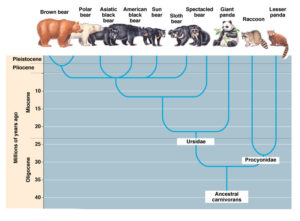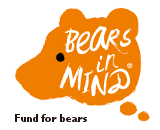There are eight species of Bear ,
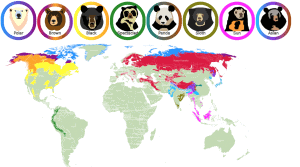
Andean or spectacled bears about 5000
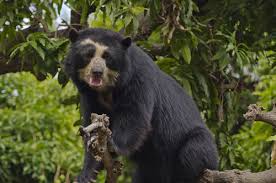
The only bear on the South American continent, Paddington is based on this shy little bear.
can be visited in the grounds of the Inkaterra Machu Picchu Pueblo Hotel in Peru, where there is a project dedicated to the preservation and better treatment of the dwindling and exploited species. The bear's numbers have dropped to between 3,000 and 6,000 and it has often been mistreated at the hands of circus owners and others seeking an exotic form of pet.
Nature Trek also offers tours to see the bear in the dry forests of northern Peru. Chaparri is one of the best places to see spectacled bears as they are quite common in the area and less shy, because of the longstanding protection and lack of disturbance the reserve has afforded them.
Equador Bear Canyon, 3.5 Hours North Of Quito Pimpampiro Pantavi in Tumbabiro , Mirador del Oso Andino , Don Danilo Avocado and Tangerine orchard to see Andean bears early in the morning. Soleq Tours South Wild Maquipucuna Cloud Forrest
Panda bears about 2000

The best place to see them is in Chengdu, China, where there are sanctuaries dedicated to the preservation of the species.
“Feeding time for the baby pandas is 8am and this is when they are at their most active, rolling around and climbing trees.
“The best way to get to the Chengdu Research Base of Giant Panda Breeding (No 1375 Panda Road, Northern Suburb; panda.org.cn/english; entrance £6) is to take a taxi. While you are there, you can ask to cuddle a panda cub, for a hefty fee. Just make sure to hold the bear facing away from you. Even the youngsters have lacerating claws.”
Polar bears about 25000
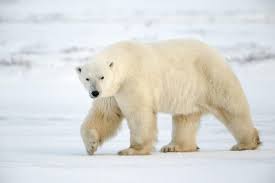
Found largely within the Arctic Circle, polar bears can be spotted on trips to Greenland, Svalbard, Russia, Alaska and Canada, or on cruises in the region.
A land-based tour with Quark Expeditions – “Highlights include sightings of polar bears, musk oxen, Arctic fox and hares, ring and bearded seals, snowy owls, peregrine falcons and beluga whales. The lodge offers gourmet dining, hiking, kayaking, river rafting and excursions in all-terrain vehicles” – or a cruise with Hurtigruten – “taking in the Eastern Svalbard Nature Reserves and South Spitsbergen National Park, with an excellent chance of sighting polar bears, lots of seabirds at Alkefjell, as well as whales and walrus”.
The Canadian province of Manitoba is a good bet if you wish to see them at close quarters, as a stay at the Nanuk Polar Bear Lodge. “In summer they are forced on to the mainland by the melting Hudson Bay ice,” he explained. “There, amid the beach ridges of spruce conifers – a strikingly different backdrop to the snow and ice with which they are normally associated – the bears migrate northwards, either to mate or await the colder weather and a return to their natural icy hunting ground.”
Brown bears about 100000
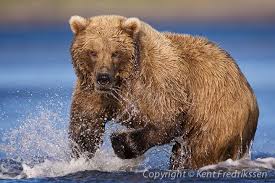
Often photographed fishing for salmon in fast-moving rivers, brown bears are fairly easily spotted across Europe, Russia, Canada and NW USA. Sweden has remote hides set up for watching the large bears roam through the woods, through Wild Sweden.
Bulgaria has a large, stable population of the bears, and there are tours available to go looking for them in the vast deciduous forests and unique pseudo-boreal conifer forests of the Rhodopes mountains. See Nephron tours for more information. Grizzly bears The term grizzly bear refers to any North American subspecies of the brown bear. One of the best places to see them is the Canadian territory of Yukon, and the perfect time is the six weeks from late September to early November, while the salmon are spawning and bears gather around the streams and waterfalls to pluck them from the water, or even the air.
Bear Cave Mountain in North Yukon The salmon attract grizzlies every season – Yellowstone and Glacier National Parks in the US are also in grizzly bear territory.Kodiak bears
This hefty subspecies of the brown bear can weigh up to 1,500lbs and is found on the Kodiak Archipelago in Alaska. The Kodiak National Wildlife Refuge is home to the bears, as well as the red fox, river otter, ermine, tundra vole, and little brown bat.
American black bears about 60000
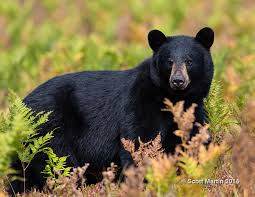
The most widely-distributed bear in North America, with a population twice that of all other bear species combined, the American black bear is found as far south as Mexico. As such, there are plenty of places to spot them. Kings Canyon National Park in California, or else try the Saguaro National Park in Arizona ("You may spot white-tailed deer, javelinas, Mexican spotted owl, black bears, and, if you’re lucky, the elusive kudamundi," explains Barbara Noe), or the Kenai Fjords National Park in Alaska ("the Harding Icefield Trail is a sublime walk from the face of Exit Glacier to Harding Icefield, with the chance to spot black bear along the way.").Spirit bearsAlso known as the Kermode bear, this subspecies of North American black bear is found in parts of British Columbia. It is noted for about 10 per cent of its population having cream-coloured coats. There are no more than 400 spirit bears, all confined within Island Roamer’s cruising grounds.
Sloth bears about 8000
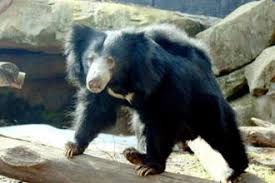
The inspiration for Baloo, the Jungle Book character, Sloth Bears are actually quite dark, with contrasting light snouts. They are the only bears known to carry their young (Mowgli-style) on their backs. They can be found in India, where they are still, sadly, sometimes made to perform as dancing bears.
Sri Lanka is the best place to try and see these creatures, for example in the Yala National Park, which can be visited through Cox and Kings. Yala is one of the largest wildlife reserves in Sri Lanka and also known for its high density leopard population.
They can also be found in India, for example, in the jungles of Karnataka, in the south west, where the Sloth Bear Resort offers tours of historic Hampi as well as jeep safaris in the Daroji Sloth Bear Sanctuary.
Sun bears about 1000
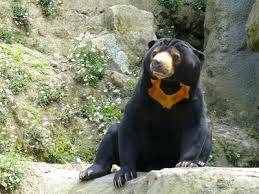
Found in the tropical forests of south-east Asia, the sun bear is also known as the honey bear, due to its appetite for the sweet stuff. The are the smallest bears, weighing up to 140lbs and measuring no more than 1 metre 50 centimetres in length.
According to the Bornean Sun Bear Conservation Centre in Sepilok, Sabah, their populations are rapidly diminishing due to deforestation and commercial exploitation. “Baby sun bears are one of the cutest young animals in the world,” it says. “After their mothers are killed, they are captured as pets and are locked in tiny cages.”
The centre has rescued 33 bears, and accepts visitors. See www.bsbcc.org.my/visit-bsbcc.html for more information.
Asian black bears or Moon bears about 30000
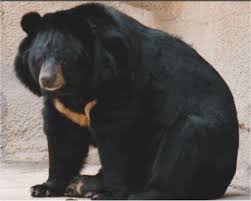
Also known as the moon or white-chested bear, the Asian black bear is found throughout Southern Asia. They may also be spotted in Afghanistan, Pakistan, Nepal, northern India, Bhutan, China, Russia, Taiwan, and the Japanese islands of Honshu and Shikoku.
Into Japan offers tailor-made tours, including a two-day hike in the Japanese Alps, with a “near guarantee of seeing Asiatic black bears in the wild”.
The Valley of Flowers in India – named among Telegraph Travel’s 100 places to see before you die - is home to several rare animals, including the Asian black bear, the blue sheep and the snow leopard. Getting there is something of a schlep, however - it involves a 10-mile trek from the town of Joshimathia
Evolution of Bears
Bears are the youngest of the carnivore family having evolved from dog like ancestors about 40 million years ago. Modern bears appeared in Eurasia around 5 million years ago and diversified and spread through Europe, Asia, and North America, eventually reaching South America. Fossils indicate that bears once lived in Africa, with one large primitive species found as far south as present-day South Africa.
Among the extinct bears was the largest land-living mammalian carnivore, the giant short-faced bear, almost twice as big as today’s brown bear. Unlike modern bears, it was lightly built, with long legs and feet that enabled it to run fast.It lived in North America from 1.6 million to 10,000 years ago. The earliest people to reach North America, perhaps as early as 15,000 years ago, must have found this animal truly frightening.The short-faced bear spread into South America. Scientists believe the spectacled bear is a smaller relative of this extinct bear.
Perhaps the most famous extinct species is the great cave bear, which lived in Europe for several hundred thousand years until it became extinct around 10,000 years ago. Its bones have been found in caves from Spain to the Caucasus. This bear was as large as the modern Alaskan brown bear. Cave drawings created by Ice Age humans show that they occasionally hunted cave bears.
A population of brown bears that lived along the coast became specialised for hunting seals, eventually evolving into the polar bear around 700,000 years ago.
